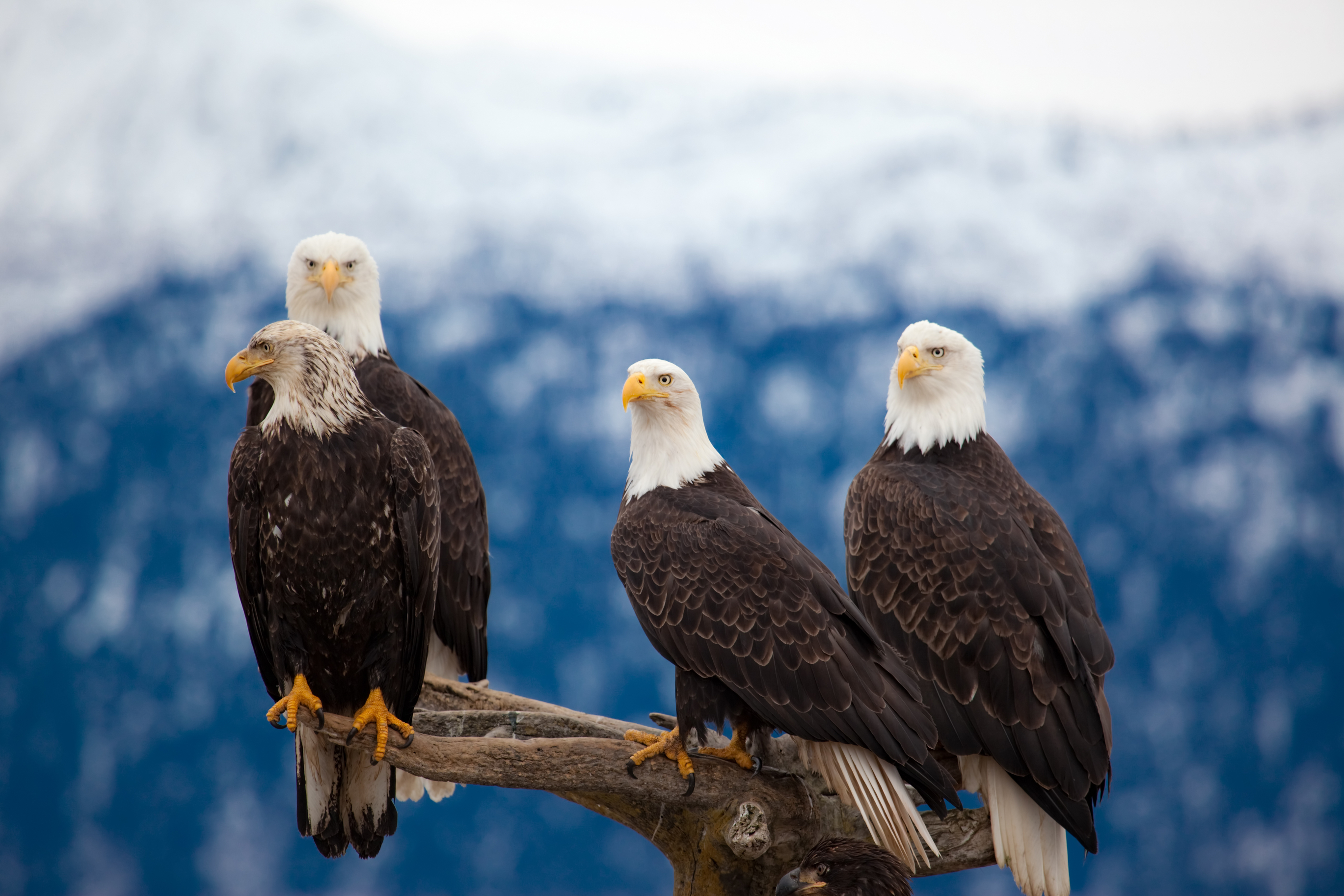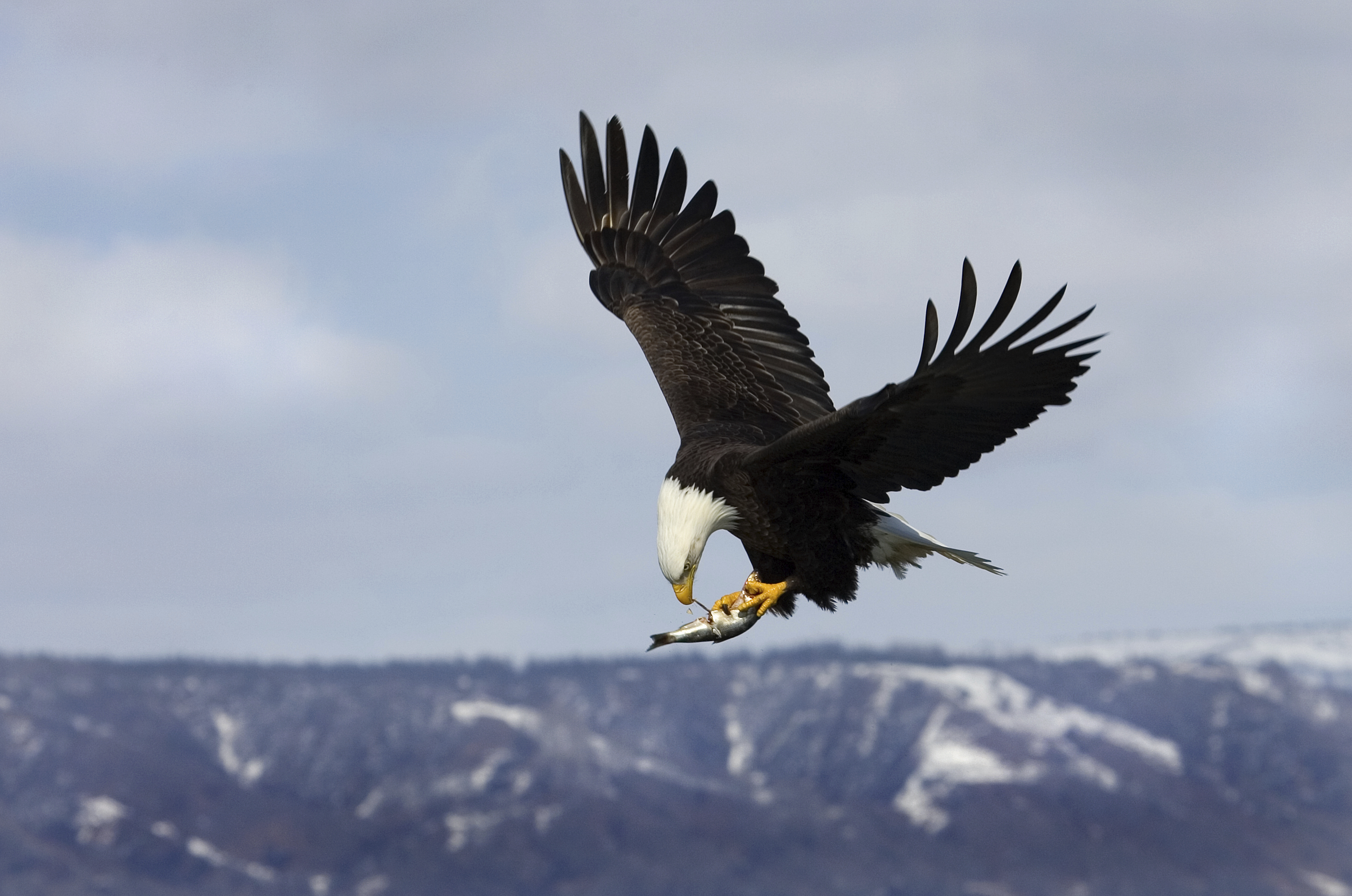Bald eagle is a large bird of prey known for the distinctive white feathers on its head. The bald eagle is found only in North America. Bald eagles are not bald. The name comes from an older use of the word bald, which long ago meant white-headed. Adult bald eagles have white head and tail feathers and dark bodies.

Adult bald eagles measure 30 to 40 inches (75 to 100 centimeters) long. The average wingspread of an adult bald eagle is 7 feet (2 meters). Adults can weigh up to 15 pounds (7 kilograms). Females are larger than males.
Bald eagles live near bodies of water such as large lakes, rivers, and oceans. They feed mainly on fish. A bald eagle uses its keen eyesight to spot prey from far away. It catches the prey using its strong legs and sharp claws. Bald eagles also eat carrion (dead animals) and prey on small mammals, other birds, and occasionally, reptiles.
Bald eagles usually mate for life. Together, the bald eagle pair builds a large nest high above the ground to raise their young. They may return to the same nest year after year. The pair continues to add to the nest, which can measure 9 feet (3 meters) wide. A nest can weigh over 1 ton (0.9 metric ton).

A female bald eagle may lay one to three eggs. Chicks usually hatch after about 35 days. The young have dark feathers all over their bodies, with lighter feathers mixed in. They do not grow the white head and tail feathers until they are about 4 or 5 years old. Bald eagles live about 30 years in the wild.
In the early 1900’s, the number of bald eagles dropped due in part to human activities. Such activities included disturbing eagle nests, destroying eagle habitat, and hunting. But bald eagles’ numbers were particularly harmed by the use of the pesticide DDT. DDT flushed into waterways during rains and built up in the bodies of fish eaten by eagles. The chemical caused female eagles to lay eggs with thin, breakable shells. By 1963, fewer than 500 breeding pairs of bald eagles lived in the continental United States. The United States banned the use of DDT in the 1970’s. By 2007, the number of bald eagles had risen high enough to remove the species from protection under the Endangered Species Act. Bald eagles are still protected by various laws in the United States, Mexico, and Canada.
